IMPACT FUND FOR CHILDREN 2023 ANNUAL REPORT







FY23 has been a year of continued focus on bridge funding for critical needs, as well as a year of new strategies focused on improved outcomes for children. Earlier this year, the Impact Fund was proud to announce a Child-lens Investing Framework to be used by investors to intentionally consider the needs and rights of children as they make investments, and to ensure vehicles to deliver impact for children grow beyond philanthropy alone.
On a recent trip to Ghana, Cristina observed firsthand examples of why more investment capital should be put to work for children. As part of an innovative UNICEF initiative, Cristina met with women like Emilia, a mother who took out a microloan to purchase a toilet for her home. It was built by an artisan, who also used microfinancing to purchase the raw materials to make it.

Capital market solutions, however small, were able to offer Emilia’s family access to safer water and healthier conditions in which to grow up. It was gratifying to see, and encouraging to keep spreading the word that Child-lens Investing can generate meaningful returns for all involved.
As needs for COVID-19 and the war in Ukraine subsided this year, we focused on fewer but longerterm foundational strategies that yield similarly valuable returns for families like Emilia’s. Our flagship Bridge Fund supported $48.2 million in impact, focusing on the systems-driven and developmental work that keeps more children healthy, educated, protected and respected.
The Bridge Fund was able to double its investment in UNICEF Supply Division’s Vaccine Independence Initiative (VII), a support mechanism for governments looking to procure their own health supplies. The investment is helping 76 million children in eight subscribed countries get accelerated access to vaccines.
Similarly, in response to global malnutrition needs, the Bridge Fund committed $20 million toward a catalytic funding mechanism to strengthen the supply chains that provide lifesaving Ready-toUse Therapeutic Food (RUTF), contributing to treatment for ~1.88 million children.
Building infrastructure and supply chain stability are valuable investments that will help UNICEF prepare for future emergencies, girding it for fluctuations in demand. UNICEF also requires a capital structure geared toward a five-to-seven year horizon, which will help bring these projects to scale.
We look forward to building this resilience together. We thank all our donors and lenders for your continued partnership. Our success is a testament to the momentum we’re building together.
Cristina Shapiro Glen Baptist President Board Chair UNICEF USA Impact Fund for Children UNICEF USA Impact Fund for Children“At the Strategic Investment Fund, we are relentlessly in pursuit of a world in which everyone has the chance to live a healthy and productive life. Supporting children may be one of the most universal and effective ways to do this. Childhood is a uniquely formative, yet vulnerable, period of life for which the right investments will have transformative effects for both children and society at large. I am excited about the Impact Fund’s work to drive greater intentionality for children across all investment strategies through introduction of a child lens.”
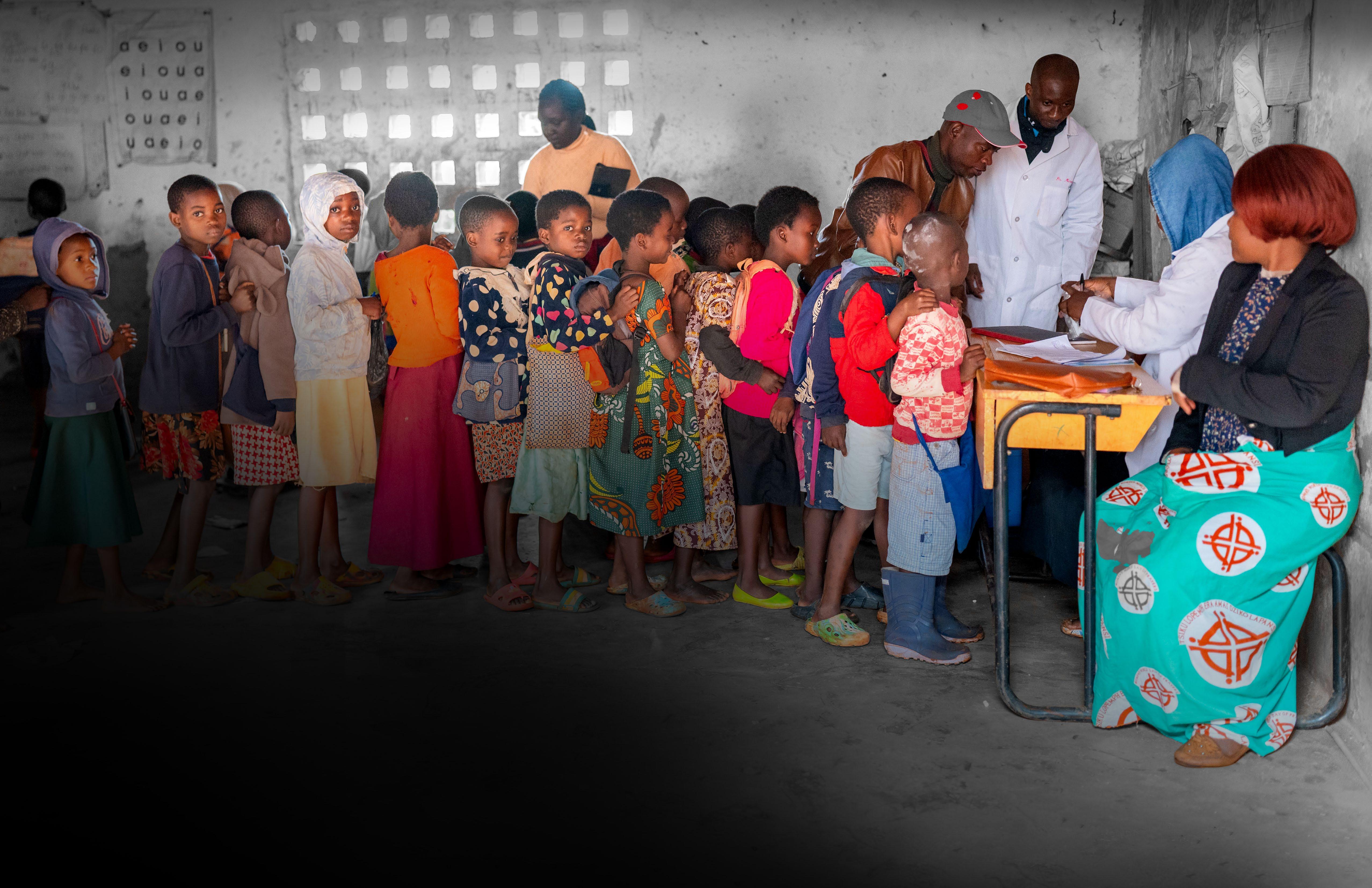 VIDYA VASU-DEVAN, DIRECTOR OF THE BILL & MELINDA GATES FOUNDATION STRATEGIC INVESTMENT FUND AND IF4C BOARD MEMBER
VIDYA VASU-DEVAN, DIRECTOR OF THE BILL & MELINDA GATES FOUNDATION STRATEGIC INVESTMENT FUND AND IF4C BOARD MEMBER
In FY23, the Bridge Fund accelerated funds to more than seven regions , responding to emergencies, providing timely vaccinations and accelerating lifesaving nutrition treatment to children and families around the world.
UNICEF-administered funds are driving systemic impact as supply challenges are addressed. RUTF
A $15 million investment in the Ready-to-Use Therapeutic Food Supplier Advance Payment Window helped support suppliers scale up production and meet increased demand by providing flexibility to address challenges in labor, input costs and equipment availability.
The RUTF Supplier Advance Payment Window accelerated the provision of RUTF treatment for ~1.88 million children during the worst climate-induced drought the region has seen in 40 years.2
VII
An investment in UNICEF’s Vaccine Independence Initiative offered tools to help national governments bridge funding gaps for vaccines and health-related supplies while providing assistance to ensure supply systems progress toward efficiency and self-sufficiency.
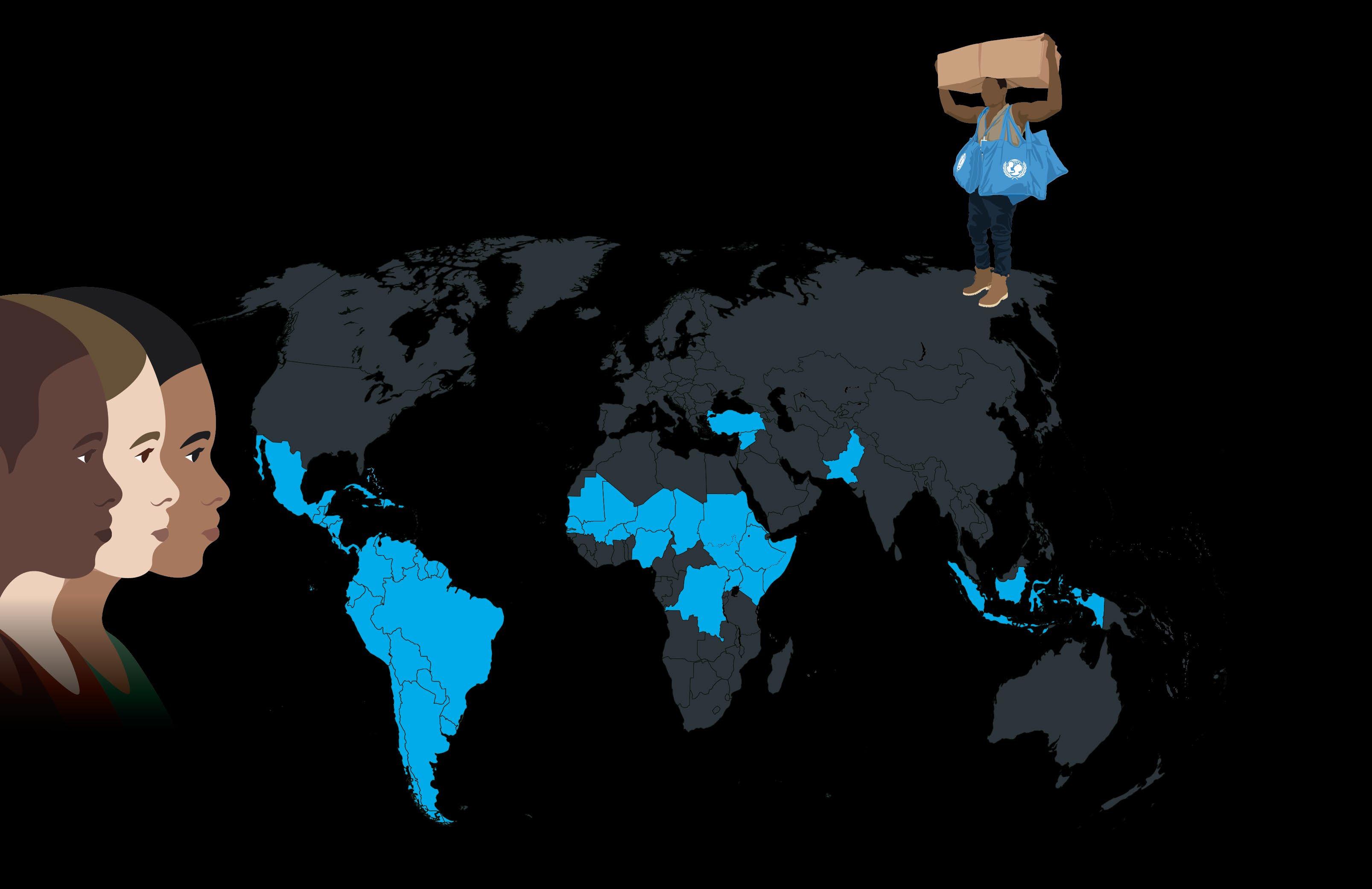
Multiregional
Sub-Saharan Africa 1
Latin America & the Caribbean
After devastating earthquakes, UNICEF provided critical hygiene supplies to ~258,000 people in Türkiye and ~114,825 people in NW Syria.
PAKISTAN
Following life-threatening flooding, UNICEF provided humanitarian support leading to increased safety, health and security for 38,775 people, including 20,599 children. 3
Ensured continuation of early childhood development programming, including staffing and contract renewals with local organizations, providing support for vulnerable children from 0 to 3 years old and their families.
VII
The VII drove improved vaccine availability by prefinancing the procurement of ~33.3 million doses of vaccines, preventing multiple life-threatening diseases, including pneumococcal disease, rotavirus and yellow fever.
The prefinancing of ~3.5 million doses of COVID-19 vaccines by the VII allows accelerated deployment and access for citizens.
Middle East & North Africa
Eastern Europe & Central Asia
Eastern & Southern Africa
Central & Eastern Africa
East Asia & the Pacific
INDONESIA VII
UNICEF accelerated access to ~7.2 million doses of PCV protecting against the most common cause of severe pneumonia every year.
Unless otherwise noted, impact reported represents the total impact of UNICEF’s response. The Bridge Fund represents a portion of the larger pool of funding for UNICEF’s VII, RUTF Supplier Advance Payment Window and humanitarian assistance. All data for the VII represents activity between January 1, 2022 and December 31, 2022, the latest available.
1.Sub-Saharan Africa regional classification used to categorize our RUTF programs, which address needs in the Horn of Africa and the Sahel.
2.One carton of Ready-to-Use Therapeutic Food contains 150 packets, enough for one six- to eightweek course of treatment to restore the health of one severely malnourished child.
3.Impact reported represents the Bridge Fund’s proportional impact. When direct data is unavailable from country offices, Bridge Fund calculates people reached by taking the proportional size of the bridge versus the totals from UNICEF appeals or grant proposals and applying that proportion to the number of people targeted in the overall appeal.
Since May 2022, Dorcas Noertoft has served as Chief, Procurement Services for UNICEF Supply Division. Supply Division is also home to the largest humanitarian warehouse in the world. Dorcas discusses how long-term innovations in Supply Division programs and financing can deliver a better future for children.
In 2022, UNICEF procured $7.383 billion in goods and services for children in 162 countries and areas. Can you explain Procurement Services’ role in this accomplishment?
Procurement Services enables governments and other partners to leverage UNICEF’s procurement scale and expertise to meet essential supply needs. We consider it a transitional platform for governments until national public or private supply systems can fully perform this role and work with countries to support increased reliance on their domestic resources and strengthened national systems.
In 2023, the Bridge Fund doubled its contribution to $20 million to the Supply Division’s Vaccine Independence Initiative (VII), a UNICEFmanaged financial tool that provides short-term bridge financing to governments to procure vaccines and supplies. What is innovative about the VII?
My 20 years with UNICEF have shown me the value of timely procurement of essential supplies to meet children’s basic needs and expand their opportunities. Purchasing supplies and services through UNICEF typically requires advance payment. The VII is a prefinancing tool that provides subscriber countries with flexible financing to facilitate timely procurement of supplies, which governments can pay for after delivery.
VII support can accelerate supply availability by at least four to six months. The VII also backs special contracts, like those we used during the
COVID-19 pandemic response to pre-position syringes and secure COVID-19 vaccines. The VII has about $200 million in capital and has expanded to support procurement of other essential commodities, like medicines, bednets, nutrition products and cold chain equipment. Our long-term vision is that participating countries graduate out from VII support to financial self-sufficiency.
Why is it important that countries “graduate” to financial self-sufficiency?
When countries reach a certain level of development, those governments must find ways to sustain the impact previously made by other support. The VII and Supply Division also provide technical assistance to help countries develop procurement budgeting processes, multiyear supply planning, capacity building in forecasting and budgeting and other resources.
You mentioned the need to scale up nutrition supplies. The Bridge Fund committed $20 million to a new Ready-to-Use Therapeutic Food (RUTF) Supplier Advance Payment Window this year. What has the RUTF window’s impact been?
More than 27 million children are suffering from acute malnutrition worldwide, and existing manufacturers needed more liquidity to increase RUTF production capacity in response. UNICEF created a financing solution deployed in conjunction with the VII to advance cash payments to suppliers on a financially secure basis. For example, in mid2022, UNICEF prefinanced the procurement of 36,000 cartons of RUTF and therapeutic milk for
Cameroon to prevent a supply chain disruption. The VII backed $2.3 million to suppliers until the country was able to access its mobilized funding.
Since December 2022, the facility and the VII have advanced more than $80 million to enable more than $100 million in RUTF procurement orders, which can provide roughly 3.6 million children with six to eight weeks of lifesaving nutrition treatment.

The improved liquidity has catalyzed one local supplier in Africa to ramp up production and meet all local demand; it is now preparing to export RUTF to neighboring countries later in 2023.
What future challenges and opportunities do you anticipate for the Supply Division?
I hope to see the VII continue as the vehicle that supports more timely access to essential supplies for children. I managed COVID-19 vaccine contracts, and we’re incorporating learnings from that response to strengthen preparedness for future threats. For example, the Supply Division developed a technological platform in collaboration with Microsoft to handle enormous amounts of data. The Supply Division prides itself on bringing game-changing solutions to market quickly. We must also continue to provide technical services to help governments attain domestic self-sufficiency, particularly as the Sustainable Development Goals deadline looms.
To accomplish all this and more, we will continue to rely on our trusted partners, like the Bridge Fund, whose long-term commitments help support lasting impact for children.
“My 20 years with UNICEF have shown me the value of timely procurement of essential supplies to meet children’s basic needs and expand their opportunities.”
DORCAS NOERTOFT CHIEF, PROCUREMENT SERVICES FOR UNICEF SUPPLY DIVISION


In the last quarterly report, we introduced Child-lens Investing, an investing approach through which investors intentionally consider child-related factors to advance positive child outcomes while also minimizing child harm. In continuation of the work, the Impact Fund for Children team, in partnership with the UNICEF Innovative Finance Hub and impact investing consultant, Tideline, has been engaging with a cohort of six fund managers from across the impact investing ecosystem to explore ways in which the child lens can be improved before an official publication of the framework in September.

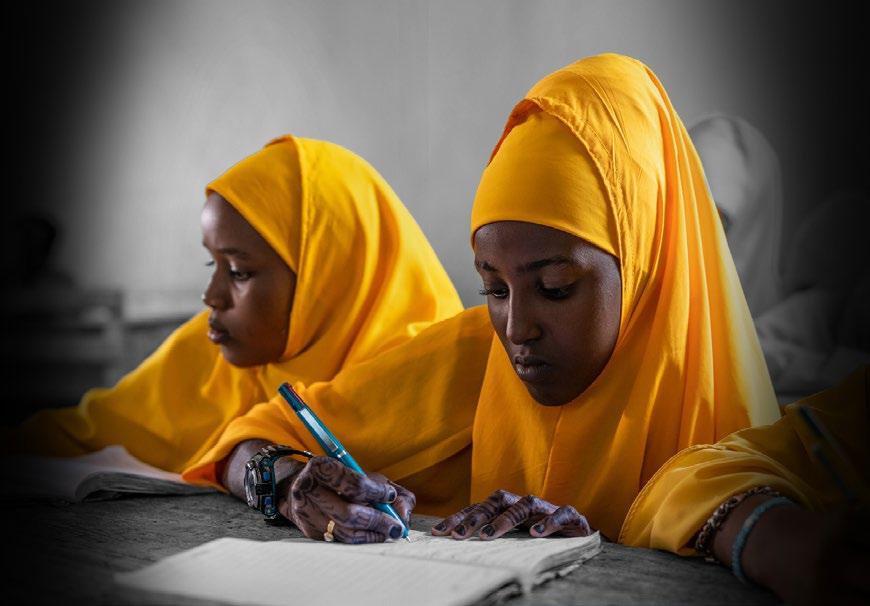
The carefully selected cohort represents fund managers with diverse global reach and roles in the investing ecosystem ranging from childcentered funds, direct investors, funds of funds and development finance institutions. The breadth of perspectives offered help to build on the current discussion paper and investor toolkit to optimize the child lens for applicability across a wide range of investment strategies.
The cohort met as a group and was presented with a multi-session curriculum to build a detailed understanding of the child lens as well as opportunities to apply the toolkit with advisory support, learn from peers and share feedback.
The Impact Fund for Children is committed to building out the child lens with continued input from the private sector. The cohort has helped deepen our team’s understanding of what adoption may look like across a wide range of investment strategies.
Learn more about Child-lens Investing and download the discussion paper and investor toolkit through this link .

“Working with UNICEF on developing a child lens has prompted us to ask questions that we might have never thought to ask before and that is very valuable. It’s quite similar to how we work with other investors to implement a gender lens — just getting them to ask a simple question can be the start of a really important journey.”
CAITLIN ROSSER CALVERT IMPACT
BRIDGE FUND ACTIVITY ENABLED $ 48.2 MILLION
TOTAL BRIDGE FUND ACTIVITY ENABLED SINCE 2011 $ 596 MILLION WEIGHTED AVERAGE MONTHS ACCELERATED 1.3 MONTHS
Note: Weighted average months accelerated excludes VII and RUTF investments, which have five-year tenures. The 1.3-month average reflects a range of a few weeks during emergencies to more than a year for longer funding gaps for programs.
W ASH $0.03 million
Child Protection
This year, the Bridge Fund increased its investments in UNICEF Supply Division programs that provide flexible, long-term solutions.
The Vaccine Independence Initiative and the RUTF Supplier Advance Payment Window work toward improving global health by enabling prefinancing for vaccines and malnutrition treatment to ensure that supplies are where they are needed, when they are needed. These solutions also provide governments with technical assistance to improve procurement processes to prevent future stockouts.
• The Bridge Fund’s outstanding $10 million investment in UNICEF Supply Division’s VII delivered approximately $15.5 million in impact in FY23, resulting from an average 1.55x VII fund revolver.2
• In 2022, the VII reached ~76 million children with routine vaccines.2


• Over the first seven months of activity, the RUTF window provided ~1.88 million children with RUTF treatment.3
• At the end of FY23, the Bridge Fund increased its investment in the VII, contributing an additional $10 million.
TOTAL $48.2 million
Strategic Investments in Flexible Funding
$1.0 million
$0.6 million Education $2.6 million
Emergency Response $3.0 million
Nutrition $15.0 million
Health $26.0 million1
1. Includes $15.5 million in impact enabled from VII outstanding funds.
2. As of December 31, 2022, the Bridge Fund comprised 5.4 percent of the total VII capital base and represents a portion of total activity. The Bridge Fund’s $10.0 million investment in UNICEF Supply Division’s VII delivered approximately $15.5 million in impact in FY23, resulting from an average 1.55x VII fund revolver. Given the latest available VII data is as of December 31, 2022, the 1.55x FY23 VII fund revolver was calculated using the average between the actual 1.0x revolver for July 2022–December 2022 and a projected 2.1x revolver for January 2023–June 2023. These projections were based on the average between the actual VII revolvers for the last three calendar years (2020–2022). Note that in addition to the $15.5 million in impact enabled from outstanding funds, the Bridge Fund distributed an additional $10 million to the VII for total impact of $25.5 million in FY23.
3. Impact reported represents the total impact of UNICEF’s overall response. The Bridge Fund represents a portion of UNICEF’s larger pool of funding.
“We believe that the SDGs are a blueprint for a more sustainable future. The Bridge Fund adds meaningful impact, from Zero Hunger to Gender Equality, by accelerating long-term outcomes for children and societies.”
ALEX LAMB, MANAGING PARTNER OF NEW SUMMIT INVESTMENTS
IN FY23, THE BRIDGE FUND PROVIDED $ 44.2 MILLION 1 1
TO DRIVE PROGRESS ACROSS FIVE SUSTAINABLE DEVELOPMENT GOALS (SDGS)
2
SDG CHALLENGE BRIDGE FUND IMPACT
Zero Hunger
SDG 2
End hunger, achieve food security and improved nutrition and promote sustainable agriculture
You can find detailed targets for SDG 2 by clicking on the link here
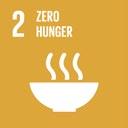
Good Health and Well-Being
SDG 3
Ensure healthy lives and promote well-being for all at all ages
You can find detailed targets for SDG 3 by clicking on the link here
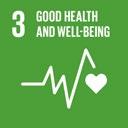
As of the latest data, within the 15 countries most impacted by the global food crisis, 27 million children are living in severe food insecurity and 8 million children are suffering from severe wasting, or severe acute malnutrition — the deadliest form of undernutrition. These countries are located primarily in the Horn of Africa, the Sahel and countries in crisis, including Afghanistan, Madagascar, Yemen, Haiti and the Democratic Republic of the Congo.
SDG 4
Ensure inclusive and equitable quality education and promote lifelong learning opportunities for all
You can find detailed targets for SDG 4 by clicking on the link here
SDG 5
Invested $15 million into the UNICEF Supply Division RUTF Supplier Advance Payment Window, contributing to a catalytic capital base that allowed for the procurement of 1.88 million RUTF cartons, providing treatment for ~1.88 million children in the first seven months of activity.3
Achieve gender equality and empower all women and girls
You can find detailed targets for SDG 5 by clicking on the link here
SDG 6
In 2022, 20.5 million children did not receive one or more vaccines delivered through routine immunization services. This number is higher than the 18.4 million children who missed out in 2019 before pandemic-related disruptions, highlighting the need for ongoing system strengthening efforts.
As countries further develop health care and vaccine procurement systems, they will graduate from dependence on donor funds or government aid and rely heavily on domestic resources, revealing a need for technical assistance to create a smooth transition to full efficiency and reduce the risk of health commodity stockouts.
The Bridge Fund invested an additional $10 million in the VII at the end of the fiscal year.
During the period between January 1, 2022 and December 31, 2022, the VII provided $90.8 million for vaccine procurement and supplies for vulnerable countries and enabled $48.2 million in COVID-19 supplies and vaccines through prefinancings. As a result, the VII was able to reach ~76 million children faster with 102 million doses of routine vaccines.4
UNICEF recognizes that the roots of the learning crisis lie in early childhood. Prior to the pandemic, 38% of countries invested less than 2% of their education budgets on pre-primary education, and more than 175 million children did not have access to pre-primary education. The COVID-19 pandemic resulted in an estimated 10.7 million additional young children falling off track in their early development because of disrupted early childhood education services. Studies show that every US$1 invested in early education generates returns of up to US$9.
$164,160 accelerated for the uninterrupted expansion of early childhood development programming for vulnerable children in Rwanda, including the development of eight childcare centers.
$2.5 million toward the continuity of early childhood development programming in Latin America, including staffing and contract renewals with local organizations.
An estimated 650 million girls and women alive today were married in childhood. Every year, around 12 million girls are married as children. New data show that progress would need to be nearly 20 times faster to reach the Sustainable Development Goal target of ending child marriage by 2030.
Accelerated $588,000 to ensure the continuity of the Global Programme to End Child Marriage, which prevents girls from marrying too young and supports those already married, at a time when backsliding following COVID-19 risked recent progress against child marriage.
Ensure availability and sustainable management of water and sanitation for all

You can find detailed targets for SDG 6 by clicking on the link here
Globally, more than 1,000 children under 5 die every day from WASH-related diseases, with ~2 out of 5 concentrated in 10 countries, all located in Africa, with the highest triple burden of children lacking basic water or sanitation services, under-5 child deaths from WASH-related diseases and climate threats that impact WASH services.
Accelerated $27,440 to ensure the continuation of programming of the Duke-UNICEF Innovation Accelerator, which supports cohorts of social entrepreneurs in scaling market-based, sustainable solutions. Bridged funds contributed to the graduation of seven social enterprises from Eastern and Southern Africa that together reached ~5 million people with life-changing, innovative, and equitable water, sanitation and hygiene solutions.
1. In FY23, the Bridge Fund’s total impact of $48.2 million comprised $44.2 million to drive progress across five SDGs plus $4.0 million to emergencies in Pakistan, the Horn of Africa, Syria and Türkiye, plus investments in net new revenue generation for UNICEF.
2. Please contact the Impact Fund for Children team for the full list of FY23 transactions and SDG targets.
3. One carton of Ready-to-Use Therapeutic Food contains 150 packets, enough for one six- to eight-week course of treatment to restore the health of one severely malnourished child.
4. Impact represents total activity for the VII in the 12 months ended December 31, 2022. As of March 31, 2023, the Bridge Fund comprised 5.4 percent of the total VII capital base and represents a portion of total activity. To estimate the number of children that will benefit from vaccine procurements, vaccine wastage rates must be included. Vaccine wastage rates vary by vaccine type, number of doses per vial and local health care systems and social conditions. In addition, full immunization against some diseases may require more than one vaccination per child. Thus, there is not a one-to-one correspondence between vaccine doses procured and children reached. Assumed 25 percent wastage rate for reported figures.
This year, the Bridge Fund received a $2 million permanent donation hat functions as a fully lossabsorbing guarantee for Bridge Fund transactions. This will provide first-loss protection for transactions like the $15 million RUTF Supplier Advance Payment Window

This year, we have redesigned our portfolio reporting categories to better reflect the nature of Bridge Fund receivables based on repayment source and risk exposure.
Delays occur in the Bridge Fund portfolio due to the nature of the business. The outstanding portfolio is actively monitored and diligent cash flow management policies mitigate effects on the portfolio
Low Watch is defined as performance as expected, without delays or foreseeable risk of non-repayment.
“As investors across capital classes, we are excited to see the Bridge Fund move to support initiatives that tackle root causes of urgent global problems — such as strengthening RUTF supply chains to address malnutrition.”
JOHN SOBRATO SR., THE SOBRATO ORGANIZATION
$10,000 or above
Anonymous (12)
Jenny Austin
Barnum Family Fund
Mr. Andrew Beer and Ms. Eleanor Chai
Mr. and Mrs. Bradley Belt
George and Danielle Boutros
Kent and Elizabeth Dauten
Bill and Cindee Dietz
The Derek A.T. Drummond Fund
Mr. and Mrs. Steve Eaton
Laura Fenton
Fidelity Charitable Trustees’ Initiative
Fidelity Charitable Trustees’
Philanthropy Fund

Susan Cummings-Findel and Stefan Findel
Mrs. Melba Gschneidner
Ms. Deborah Hart and Dr. William Goodykoontz
Glen Baptist, Chair
Michael J. Nyenhuis
Jennifer Pryce
Vidya Vasu-Devan
Cristina Shapiro
Anonymous (1)
David and Emily Merjan
Kayhau Wu Memorial Fund
John A. and Susan Sobrato Fund, a donor-advised fund of Silicon Valley Community Foundation
Gloria Principe and John O’Farrell
AJA Foundation
*Recoverable grants up to $10 million are excluded from the 3.5:1 debt-to-equity ratio. As reported here, loans payable only includes cash loans and the line of credit.
Kathy Lai
G. Barrie Landry
Mr. Harry W. Lange
Mariner Investment Group, LLC
Lopp Family Fund
Inspired by Dad: The Campaign to Honor
Anthony Pantaleoni
Jennifer Paradis-Behle and Tim Behle
Qatalyst Partners
Ian Rosenfield and Susanne Caballero
Jen Rubio and Stewart Butterfield
Luly and Maurice Samuels
Schlessman Family Foundation
Nicole and Shahriar Shahida
Bernard Taylor, Sr.
Mr. Jeffrey Urbina and Ms. Gaye Hill
Kayhau Wu Memorial Fund
Hilary & Sean Scott
Dolores and Thomas Gahan
Gary M. Cohen
Carol Hamilton
Sippi and Ajay Khurana
Pooja Bhandari and Caesar Sengupta
G. Barrie Landry
Wendy’s Wish Giving Fund
Eric Ross and Nicole MacNeel
Hal and Nancy Kurkowski
Sandra and Lawrence Post
The McClelland Fund
The Karmani Fund
The Ken Olivier and Angela Nomellini Charitable Fund
Loans of $1,000,000 or above Anonymous (1)
TD Bank, N.A.
Prudential Financial, Inc.
New Summit Investments
St. Joseph Province
Merck & Co., Inc.
Aflac
Sisters of St. Francis
Sobrato Family Foundation
G. Barrie Landry
Sandra and Lawrence Post
Loans under $1,000,000 Anonymous (6)
Hal and Nancy Kurkowski
Nicole and Shahriar Shahida
Linda Spencer Murchison
Futures Without Violence
Nicholas Sloane
G. Barrie Landry
Sudip Thakor
Laura Fenton
Sheilah and Matt Burnham
Eric Ross and Nicole MacNeel
The Alison Carlson Trust
Minneapolis Foundation
Loans $3.9 million
Recoverable Grants $0.03 million
Grants $1.7 million
We certify that, as of the quarter ending June 30, 2023, there exists no default or Event of Default (as such term is defined in the Loan Agreement), and we are in compliance with the covenants set forth in Sections 4.1 and 4.4 and in Article V of the Loan Agreement, including without limitation and as demonstrated in the above computations, the financial covenants set forth in Sections 5.2 and 5.5 of the Loan Agreement.
Cristina
Shapiro, President, UNICEF USA Impact Fund for ChildrenSandra and Lawrence Post
Glen and Anita Baptist
Donors under $10,000 (300+)
First-Loss Guarantee $2.0 million
TOTAL $7.6 MILLION

The Bridge Fund was selected as an Emeritus Impact Manager for the ImpactAssets 50 (IA 50) 2023 list. The IA 50 recognizes managers who have demonstrated a consistent ability to generate positive impact and resilience within the impact investing market. We thank our investors and donors who have contributed to this inclusion on the IA 50 list for the ninth consecutive year.

To learn more, please visit our website at unicefusa.org/impact-fund-for-children or contact:
Cristina Shapiro, President UNICEF USA Impact Fund for Children cshapiro@unicefusa.org 212-922-2556
Erin Egan, Managing Director UNICEF USA Impact Fund for Children eegan@unicefusa.org 212-922-2571
CREDITS
Photographs — Front cover: © UNICEF/UNI417482/Issa; page 2: © UNICEF/UNI416804; page 4: © UNICEF USA/KOK5911/Kokoroko; pages 6-7: © UNICEF/UNI415954; page 11: © UNICEF/UN0747464/Zehbrauskas; page 12: © UNICEF/UN0820669/Shing; page 14: © UNICEF/UN0772738/Izquierdo; page 15: © UNICEF/UN0767699/ Monemnasi; page 19: © UNICEF/UNI404807/Chikondi; page 22: © UNICEF/UN0799150/Al Asad; back cover: © UNICEF/UN0616764/Dejongh
